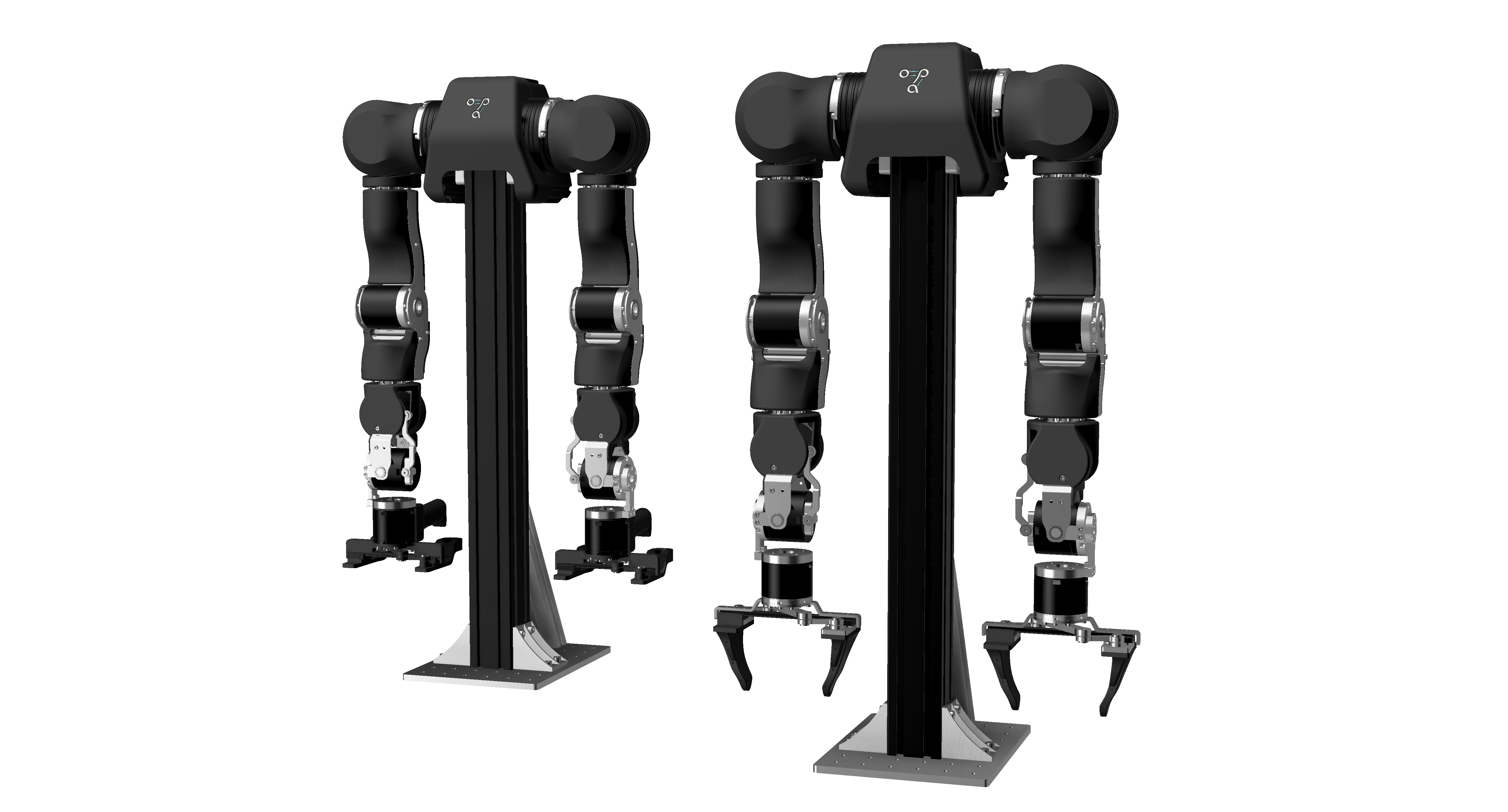Leader-Follower Teleoperation
OpenArm supports 1:1 teleoperation from a leader arm to a follower arm in two control modes:
Unilateral Control
This is the basic teleoperation setup, where the follower arm directly mimics the leader’s movements through position commands. It’s a one-way control scheme — the leader sends motion commands, but no force feedback is returned.
- Pros: Simple and robust; ideal for initial tests and free-space motion
- Cons: No tactile feedback, making it easy to apply excessive force or lose alignment during contact tasks
- Best for: Basic teleoperation, open-space manipulation, fast and lightweight operations without contact forces

Bilateral Control
Bilateral teleoperation enables haptic feedback. You feel what the robot feels. It exchanges both position and force data bidirectionally, allowing operators to sense the forces the follower arm experiences.
This produces high-quality demonstration data (motion + force) essential for imitation learning and contact-rich policy training.
- Pros: Precise contact manipulation, reduced operator fatigue, rich demonstration data (motion + force)
- Cons: Requires additional setup and tuning, needs stable communication
- Best for: Contact-rich tasks, force-sensitive manipulation, working with deformables, precision insertions, collaborative tasks near humans
How Our Bilateral Control Works?
OpenArm’s bilateral controller uses a disturbance-observer-based acceleration control system for sensorless force estimation. This approach provides accurate and responsive force feedback without dedicated torque sensors, enabling high-fidelity haptic teleoperation at a low hardware cost.
The above describes the concept of our four-channel bilateral control architecture, which is currently under development and shared only with our research partners. We are actively working on a more robust and stable implementation for future public release. The open-source version currently offers a classical position–force bilateral control scheme, suitable for basic teleoperation and research purposes.